John Cassavetes film Shadows “improvises” Beat Generation Manhattan, where two brothers and a sister, black but two of them inexplicably played by white actors, careening off track to scaled-back sketches of Charles Mingus’ saxophone jazz yearnings. Black and white neon signs blink and the old Times Square looms like the otherworld, naturalistic cordial racism separates the chosen from the downtrodden, both dreaming of making it, of creating something.
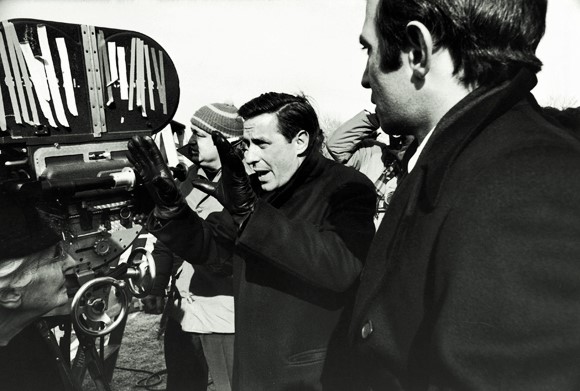

Shadows: The Eternal Times Square
By Gary Giddins, Published by The Criterion Collection
As a film star, John Cassavetes embodied the kinetic, wild-eyed, insanely grinning villain. He seemed born to the role, with his volatile energy and dynamic outbursts, luminous yet curiously deadened eyes, wide-gaping mouth (David Thomson has likened it to a shark’s). From the moment he shows up, he suggests a loose screw: think Saddle the Wind (1958), The Dirty Dozen (1967), Rosemary’s Baby (1968), and The Fury (1978), in which a lifetime of pent-up malevolence is released in a quaking detonation—a Roman candle of rage. Of course, he also played good guys, like the pianist-detective on the 1959 TV series Johnny Staccato, a short-lived Peter Gunn imitation that enabled him to pay off the debts from Shadows, which cost all of forty thousand dollars. But even as a hero, he was too unpredictable to inspire confidence. Thus it may come as a surprise to learn that the Cassavetes behind the camera, the one who launched America’s independent cinema of the sixties and ultimately made a dozen films (most of them completely under his control), considered himself, and was considered by associates, a missionary of love. “I have a need for characters to really analyze love,” he said. “That’s all I’m interested in—love and the lack of it.”
Shadows exemplifies that obsession, which is perhaps the main reason it remains as fascinating and powerful as it does. A work of its time that honestly captures its time, it is consequently a work of our time as well. It has no hero, no villain, no linear plotline, no gerrymandered suspense, no practiced comedy, and only as much sex and violence as just about all of us have encountered. Like any honest work of art, Shadows shows that life’s costumes, settings, and slang change, but human situations remain relentlessly constant.
There are two sides to modernism: the profuse and the abstemious; the quest for the infinite and for the infinitesimal, or (as Paul Ignotus wrote in a memorable study of Maupassant) the deployment of the camera as a telescope or as a microscope. Cassavetes invented a style that embraced both. — Richard Brody, in The New Yorker
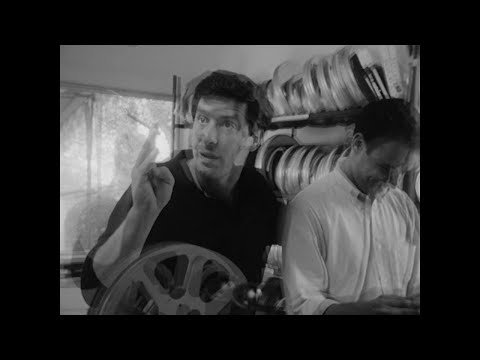
Watch this video on YouTube
Documentary: Cinéma de notre temps, Cassavetes,
Like Orson Welles, Cassavetes played the Hollywood game as an actor to defy the Hollywood industry as a director. Yet unlike Welles, Cassavetes triggered no consensus; even now, a critical middle road is hard to find. Loved or loathed, his work is therefore perfect for a home-video reappraisal, which allows us closer examination of those ensemble moments that are undeniably exceptional, and an occasional intermission if needed.
On one score, there is general agreement: his films do not look, play, or sound like anyone else’s. He has been called the American Godard, but a double bill of Shadows and Breathless, both of them shot mostly in 1959, reveals the latter to be almost glossy by comparison. Cassavetes called Shadows “the film I love the best,” because it was the first, the result of a two-year improvisation that produced successive debuts, two years apart, of two dramatically different versions. Only the second one met the director’s ultimate criteria.
STORY: Film: Carlos Reygadas Meditates on the Mennonites of Mexico
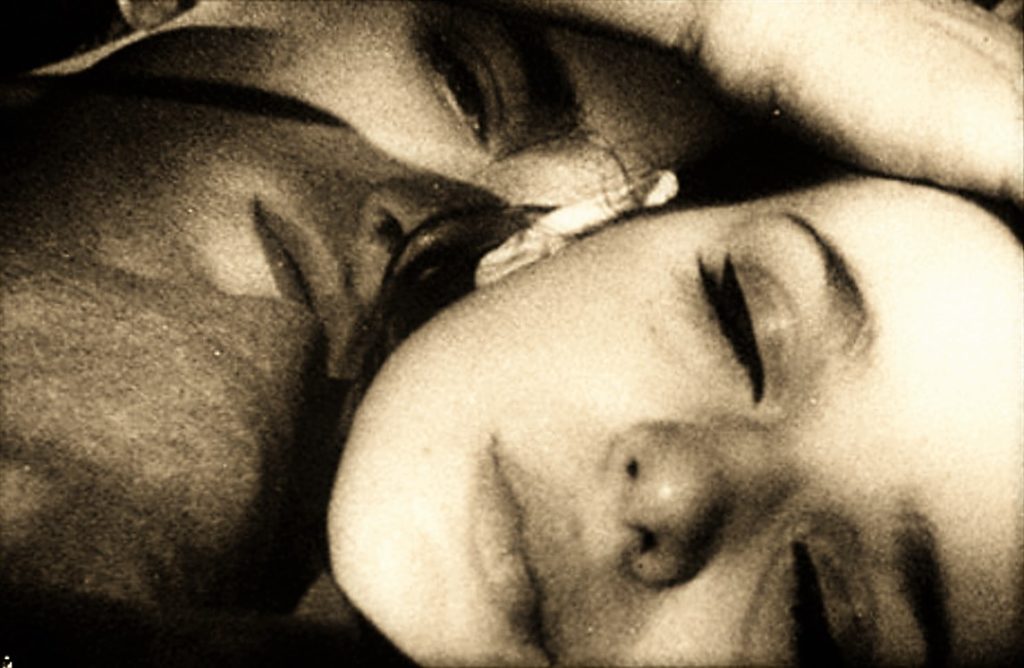

Before going further, we need to scrutinize those land mines: “improvisation” and “approved version.” Shadows closes with a credit line that identifies the film as a collective improvisation. Cassavetes and his cast have acknowledged that the final work was, in fact, almost entirely scripted. Nevertheless, if ever a film evolved as an improv, Shadows did. Most films, including Cassavetes’s, begin with an idea that generates a script, which is then brought to life by cast and crew. Shadows came about in reverse fashion. It began in workshop classes conducted by Cassavetes, largely with inexperienced actors who developed situations and relationships that inspired him to make a radio plea (on the popular Jean Shepherd’s Night People) for contributions to finance an independent film about contemporary life.
The film debuted in 1958—disastrously, according to most witnesses, though critic and filmmaker Jonas Mekas hailed it as a masterwork. For Cassavetes, however, the screening was just another station in a process, convincing him to write new scenes to make a stronger, more coherent film. In other words, the improvisational route led him to realize the limitations of improvisation. Mekas detested the second version for its more conventional plotting. Yet to his accusation that Cassavetes had sold out, no less radical a scold than Dwight Macdonald—who admired the film’s “lyrical realism,” comparing the dialogue to Eugene O’Neill’s Long Day’s Journey into Night—responded, “Although obscurity is now equated with purity, I have a reactionary prejudice in favor of communication, and I therefore favor a reasonable amount of selling out.”
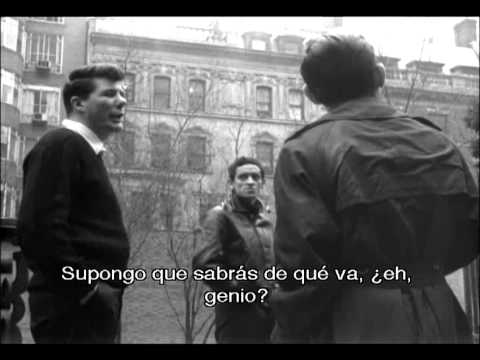
Watch this video on YouTube
Shadows (1959), directed by John Cassavetes, is a film that hints at interracial relationships during the Beat Generation years in New York City, but really aims elsewhere. The film stars Ben Carruthers, Lelia Goldoni and Hugh Hurd as three African-American siblings, though only one of the actors is of African descent. This detail alone would doom the project in today’s world, and serves in its time to undermine the power of the narrative, seemingly by design of the avowedly apolitical director. Yet, for the political climate, it was ground-breaking.
Cassavetes himself characterized the first version as a “totally intellectual movie and therefore less than human.” Few would say that of the completed Shadows, which remains thoroughly affecting. Especially memorable are the three siblings at the center of the story, two passing for white and a third attempting to pass for a Billy Eckstine–style blues crooner. Cinematically, Shadows belongs to a period when young iconoclasts like Stan Brakhage, Jack Smith, Kenneth Anger, Maya Deren, Shirley Clarke, and others were reclaiming film as the right of any artist with a camera.
Socially, it belongs to the era of Beat panic, introverted jazz, existentialist blather, chic alienation, and especially racial rapprochement—as witness plays and films like A Raisin in the Sun (1961), Edge of the City (1957) (in which Cassavetes starred opposite Sidney Poitier), the remake of Imitation of Life (1959), The Connection (1962), and The Defiant Ones (1958). Among these, Shadows is conspicuously devoid of didactic messaging. Indeed, racial discomfort produces one of the film’s funniest scenes, when Lelia’s white lover apologizes for his bad behavior on first learning that she is black and her brother Ben solemnly promises to convey his contrition. Cassavetes is less concerned with miscegenation than with Lelia’s cheerless sexual initiation—an astonishing scene in the year that Doris Day safeguarded chastity in Pillow Talk.
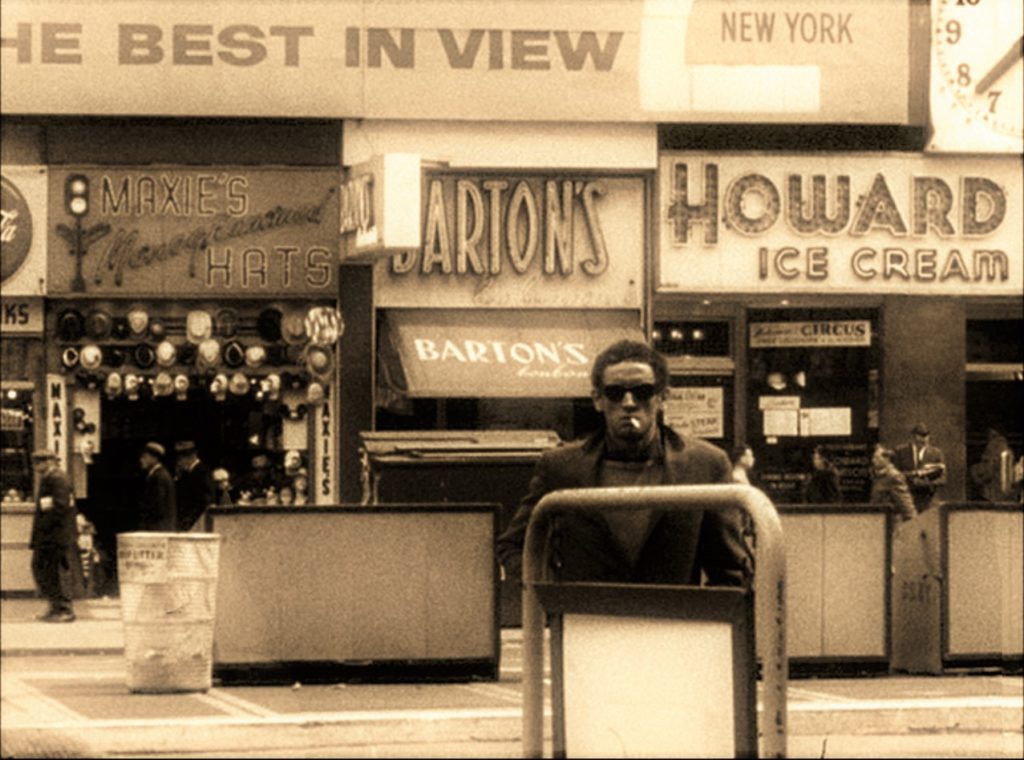

Shadows documents a New York that could afford the luxury of nihilistic posing. We get a taste of it during the credits, which scroll over a party where the visual and audio don’t fit (rock and roll on the soundtrack, a lone trumpeter on the screen, an anonymous soul contributingwhooos) while Ben sidles in with his beatnik accoutrements (bongos and cigarettes), settles into a corner, and affects a James Dean facade—lonely in a crowd. The film begins and ends with Ben, who cavorts with his friends Tom and Dennis, picking up faded women (one mockingly calls Dennis, “Good boy, big boy”), racing through the Museum of Modern Art, losing a lopsided rumble. But the heart of the story resides in the relationships between his brother Hugh, a singer humbled (as Cassavetes once was) into introducing a chorus line, and his manager, Rupert; and between his teenage sister, Lelia, and her spineless seducer, Tony. Never have siblings looked so unalike, yet they are strangely convincing, especially in the morning-after sequence, when Ben, toying with his trumpet (not unlike Ernie and his saxophone strap in Jack Gelber’s The Connection [1959], shortly to be filmed by Shirley Clarke), tells Lelia a story about the jazz god Bird (Charlie Parker).
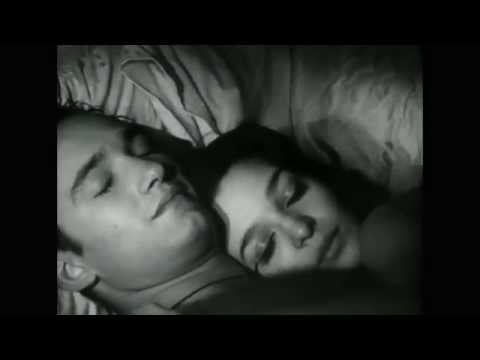
Watch this video on YouTube
Self Portrait in Three Colors – Charles Mingus, originally written for Shadows, but was edited out of the final cut, a decision again that loses its beat authenticity.
Language was important to Cassavetes, and he mines a broad range, from Dennis’s “You couldn’t be wronger” (in the MoMA scene) to the literary partygoer discussing existentialism and determined not to end a sentence with a preposition: “I know the article to which you refer,” she says. Lelia hunts girlishly for suitable metaphors, while Rupert and Hugh pump themselves up with faithful camaraderie. Music was also important. Jazz scores were in vogue in the late fifties: Miles Davis improvised in Louis Malle’s debut, Elevator to the Gallows (1957), and Art Blakey revved Roger Vadim’s Les liaisons dangereuses (1959), while David Amram and Freddie Redd created famous scores for Pull My Daisy (1959) and The Connection, respectively. Cassavetes signed the incomparable Charles Mingus, who insisted on written arrangements. The irony of a world-class improviser notating the score for a film otherwise afloat in improvisation may have been lost on Cassavetes, who tired of Mingus’s delays. In the end, the director settled for a few minutes of Mingus’s solo bass and several more minutes of Mingus’s alto saxophonist, Shafi Hadi. Mingus never completed a single arrangement for the film, but his sketches were later extended into such jazz classics as “Nostalgia in Times Square,” “Diane” (or “Alice’s Wonderland”), and “Strollin’.”
I adore the neo-realists for their humaneness of vision. Zavattini is surely the greatest screenwriter that ever lived. Particularly inspirational to me when I made ‘Shadows’ were ‘La Terra Trema,’ ‘I Vitelloni,’ ‘Umberto D’ and ‘Bellissima.’ The neo-realist filmmakers were not afraid of reality; they looked it straight in the face. I have always admired their courage and their willingness to show us how we really are. It’s the same with Godard, early Bergman, Kurosawa and the second greatest director next to Capra, Carl Dreyer. Shadows contains much of that neo-realistic influence. — John Cassavetes
The actors also left strong impressions, not least on young directors like Philip Kaufman, who cast Ben Carruthers in his first two pictures (1964’s Goldstein, 1967’s Fearless Frank) and Lelia Goldoni in Invasion of the Body Snatchers (1978). Goldoni, who claimed she lost roles because casting directors assumed she was black after Shadows, also worked with Martin Scorsese in Alice Doesn’t Live Here Anymore (1974) and with John Schlesinger in The Day of the Locust (1975). The wonderfully charismatic Rupert Crosse died young, having landed a leading role in Mark Rydell’s The Reivers (1969). Yet they and the rest of the cast (look for cameos by Gena Rowlands, in the nightclub scene; Cassavetes, protecting Lelia from a Forty-second Street masher; and Seymour Cassel, getting gut-punched by Ben) are indelibly associated with Shadows, where they seem as real as the preserved cityscapes that are a key pleasure of the movie.
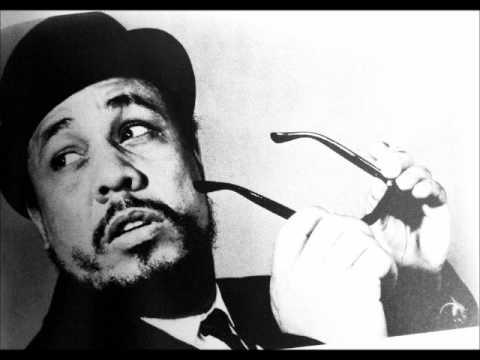
Watch this video on YouTube
Charles Mingus – Nostalgia In Times Square
Cassavetes was never big on symbols, but he seems to have had a lot of fun with Times Square movie marquees (clues, incidentally, to whether shots were made in 1957 or 1959). The Most Happy Fella introduces Ben, flush with twenty dollars. Lelia wanders in a movie neverland consisting of double features made up of 1940s Errol Flynn war films, Naked Paradise and Naked Africa, and a Brigitte Bardot sex farce teamed with Man or Gun, before she disappears into the shadows of Girls Inc. Ten Thousand Bedrooms plays down the street from The Ten Commandments, and Tony makes his pleading phone call under a banner for Top Secret Affair. You could not ask for a better illustration of what Nelson Algren called the “neon wilderness” than the last image of Ben, alone and wearing shades at night, fading into the dull blare of Times Square—a graveyard for the kinds of movies John Cassavetes hoped to annihilate.
Gary Giddins is the author of several books about music, including Visions of Jazz, Bing Crosby: A Pocketful of Dreams, and Jazz (with Scott DeVeaux). His writing on film is collected in Faces in the Crowd, Natural Selection, and Warning Shadows: Home Alone with Classic Cinema. He teaches at the City University of New York Graduate Center. This piece originally appeared in the Criterion Collection’s 2004 DVD release of John Cassavetes: Five Films.
Updated 22 August 2024

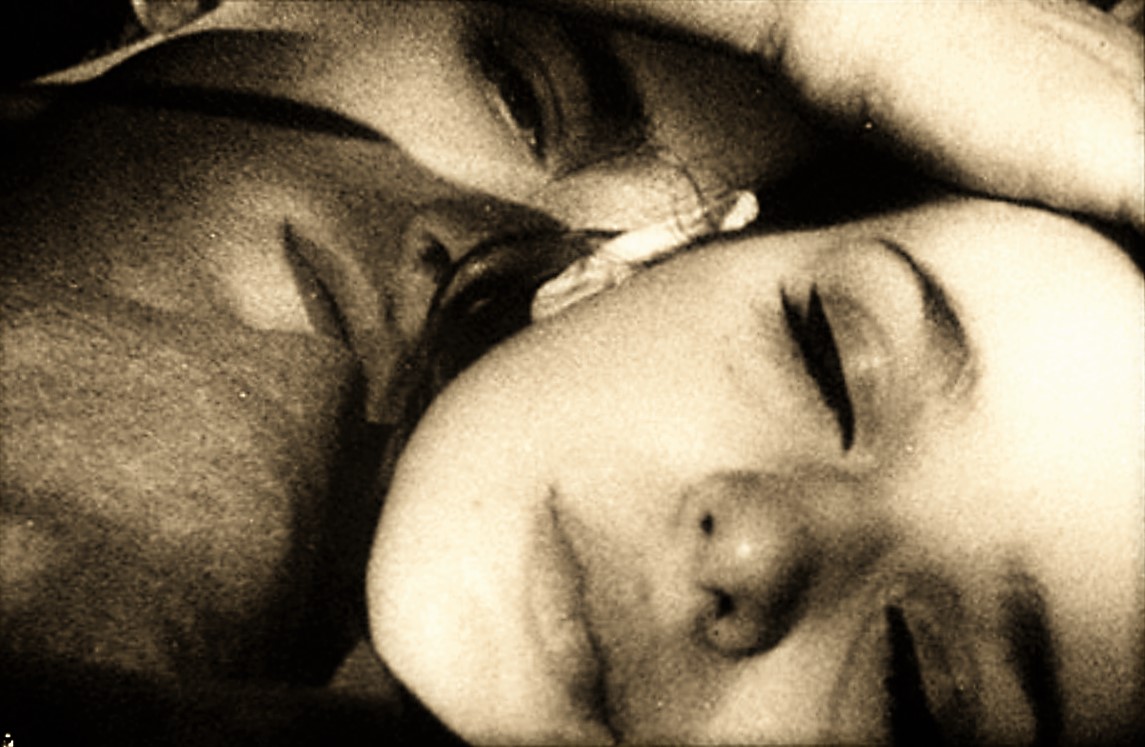


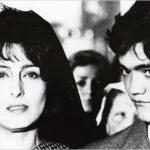
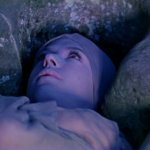








Pingback: Big Noise from Big Band Drummer Gene Krupa
Pingback: Stranger in Tangier: Paul Bowles Under The Sheltering Sky